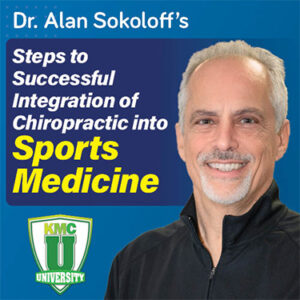An increasing number of providers have enrolled with Medicare as part of their DME program to provide knee and lumbar supports to their Medicare patients. We have noticed an uptick in requests for consultations for offices enrolled with Medicare as a Durable Medical Equipment (DME) provider due to certain DME denied that were otherwise paid previously. Many were not aware of the Centers for Medicare and Medicaid Services (CMS) Competitive Bidding Program and the impact on reimbursement.
Per CMS, Congress mandated the Competitive Bidding Program through the Medicare Prescription Drug, Improvement and Modernization Act of 2003 (MMA). The statute requires that Medicare replace the current fee schedule payment methodology for selected DME, Prosthetics, Orthotics, and Supplies (DMEPOS) items with a competitive bid process.””
Under the program, a competition is conducted among suppliers who operate in a particular competitive bidding. Suppliers are required to submit a bid for selected products. Not all products or items are subject to competitive bidding. Bids are submitted electronically through a web-based application process. Bids are evaluated based on the supplier’s eligibility, its [sic] financial stability [sic] and the bid price. Contracts are awarded to the Medicare suppliers who offer the best price and meet applicable quality and financial standards. Contract suppliers must agree to accept assignment on all claims for bid items and will be paid the single payment amount.””
The law requires that OTS orthotics or braces be included in the DMEPOS competitive bidding program, specifically “”orthotics which require minimal self-adjustment for appropriate use and do not require expertise in trimming, bending, molding, assembling, or customizing to fit the individual.””
So how does this affect the DMEPOS providers?
If you are not approved as one of the suppliers of the Competitive Bidding Program, you must first determine if you are in a Competitive Bidding area, as only certain areas are in the bidding zones established by CMS. Then, you must determine if the DME you are furnishing is part of the Competitive Bidding Program. Not all DME supplies are part of the bidding program during every cycle.
Let’s first start with your zip code to see if you are in one of the zones affected by this program: Competitive Bidding Areas – Durable Medical Equipment, Prosthetics, Orthotics and Supplies (DMEPOS) Competitive Bidding Program
Once you have established that you are in a current Competitive Bidding zone, you should assess if the DME you are dispensing is part of the bidding process here: Product Categories – Durable Medical Equipment, Prosthetics, Orthotics and Supplies (DMEPOS) Competitive Bidding Program
There is very specific language that pertains to the HCPCS codes that set aside the differences of what may seem to be the same product. Let me explain:
- Off-The-Shelf (OTS) Knee Braces is part of the Competitive Bidding Program
- L1851 – Knee orthosis (ko), single upright, thigh, and calf, with adjustable flexion and extension joint (unicentric or polycentric), medial-lateral and rotation control, with or without varus/valgus adjustment, prefabricated, off-the-shelf
- L1843 – Knee orthosis, single upright, thigh, and calf, with adjustable flexion and extension joint (unicentric or polycentric), medial-lateral and rotation control, with or without varus/valgus adjustment, prefabricated item that has been trimmed, bent, molded, assembled, or otherwise customized to fit a specific patient by an individual with expertise.
While these are both knee braces, they deserve a closer look at the differences. The descriptive wording is the same for both until we get to the words “off-the-shelf” and “trimmed, bent, molded, assembled, or otherwise customized to fit a specific patient by an individual with expertise.” We can take this down to three words “individual with expertise.” The definition of expertise is expert skill or knowledge in a particular field and would determine that a clinician would be required to perform the task.
Medicare Regulations define “”minimal self-adjustment”” as “”an adjustment that the beneficiary, caretaker for the beneficiary, or supplier of the device can perform and does not require the services of a certified orthotist or an individual who has specialized training.”” In cases where a beneficiary is not physically able to adjust the brace, the adjustment may be performed by the caretaker for the beneficiary or the supplier of the brace. The adjustment must be one that a beneficiary, in general, could make themselves, following education and training on the proper use of the device, but the individual beneficiary does not always have to make the adjustment for the brace to be classified as OTS. When the beneficiary has a medical need for a brace that requires more than minimal self-adjustment and the brace must be trimmed, bent, molded, assembled, or customized by an individual with expertise, the brace is not an OTS brace. The same back or knee brace may have separate codes if the beneficiary needs the brace to be custom fitted. Payment for custom fitting is included in the separate code for the custom fitted brace. Please contact the Pricing, Data Analysis, and Coding (PDAC) contractor with any questions regarding product classification or to submit a request for reconsideration.
Keep in mind this same concept applies to the Lumbar-Sacral Orthosis:
- L0650 – Lumbar-sacral orthosis, sagittal-coronal control, with rigid anterior and posterior frame/panel(s), posterior extends from sacrococcygeal junction to t-9 vertebra, lateral strength provided by rigid lateral frame/panel(s), produces intracavitary pressure to reduce load on intervertebral discs, includes straps, closures, may include padding, shoulder straps, pendulous abdomen design, prefabricated, off-the-shelf.
- L0637 – Lumbar-sacral orthosis, sagittal-coronal control, with rigid anterior and posterior frame/panels, posterior extends from sacrococcygeal junction to t-9 vertebra, lateral strength provided by rigid lateral frame/panels, produces intracavitary pressure to reduce load on intervertebral discs, includes straps, closures, may include padding, shoulder straps, pendulous abdomen design, prefabricated item that has been trimmed, bent, molded, assembled, or otherwise customized to fit a specific patient by an individual with expertise.
Here’s a little Q/A… |
| Question: What are the dates of the Competitive Bidding Program Round 2021? |
| Answer: Round 2021 will begin on January 1, 2021 and extend through December 31, 2023. |
| Question: What are the modifiers needed for the knee braces? |
| Answer:You will need laterality modifiers LT (left) and/or RT (right) depending on the side of the body where you fit the knee brace. You need to include the KX modifier, demonstrating you have the specific required documentation on file in the patient’s Medicare record. This documentation must be available upon request. |
| Question: Should we document who performed the fitting and what fittings were completed? |
| Answer:Absolutely! When billing for the DME classified as “customized to fit a specific patient by an individual with expertise,” you include notes as to what modifications were made and who completed them. |
| Question: Do I submit the claims to my local Medicare Administrative Contractor (MAC) where I send my Part B claims? |
| Answer:No. There are separate DME MAC’s for certain regions and jurisdictions. Make sure you enroll separately as a DME provider. |
While this can be a confusing topic for many offices, keep in mind that KMC University is ready to help you. If you are a member, reach out to us on the HelpDesk; the information is on the right-hand side of your dashboard. If you aren’t a member, we are just a quick call away. Call us at 855-832-6562.
Yvette Noel is the Director of Education and conference speaker with KMC University. She is a Certified Professional Compliance Officer (CPCO). She has served the chiropractic community for over 15 years and has worked in the medical field since 1988. Through this experience, she has continued to develop her skills of medical coding and billing. Before coming to KMC University, she managed a very successful Chiropractic and Occupational Health business. She remains very passionate about KMC University and takes much pleasure in helping members with their documentation, reimbursement, and compliance needs.
Need more help? Schedule a free Discovery Assessment or purchase a Solutions Consultation







Comments on Durable Medical Equipment and the CMS Competitive Bid – Why You are Not Getting Paid